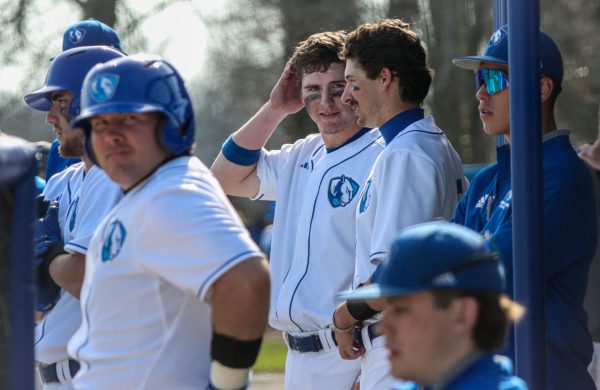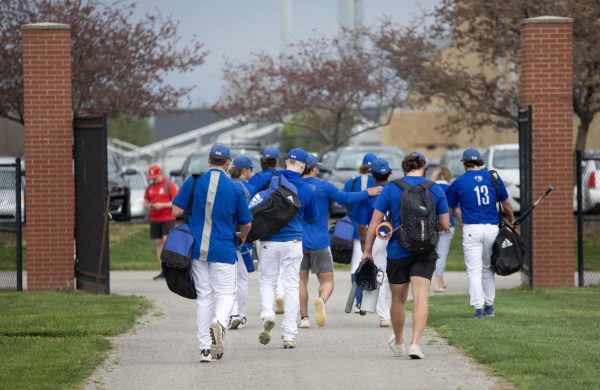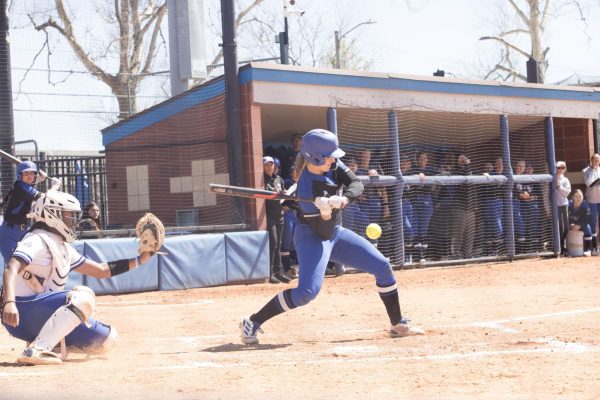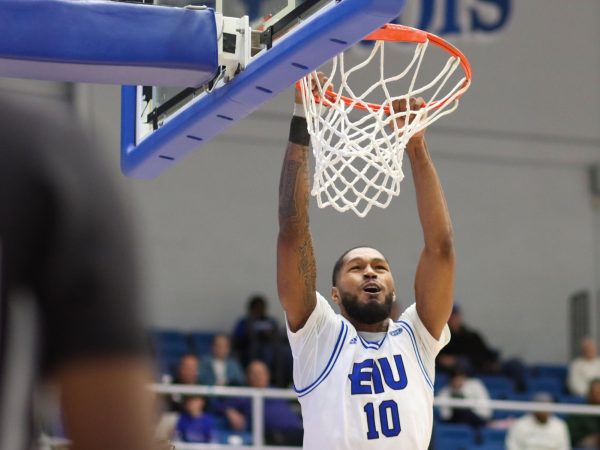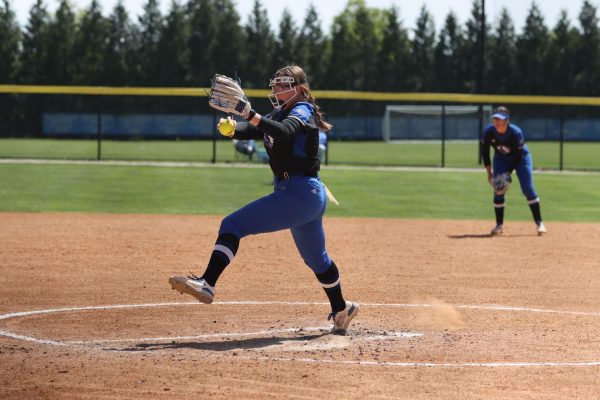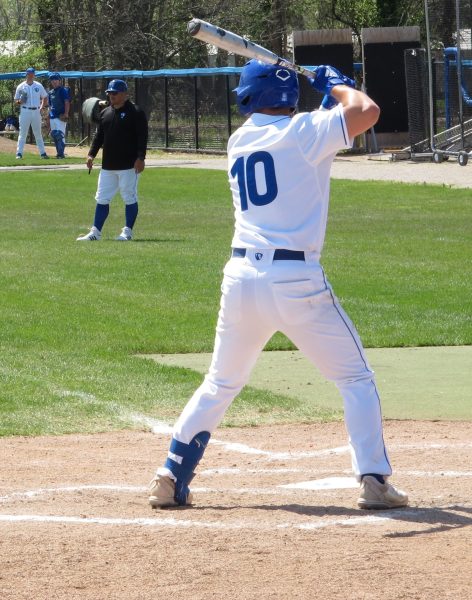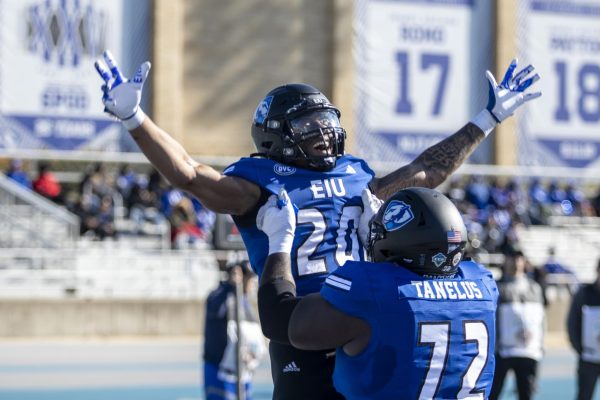Triple Threat: Double Plays
Turning a double play in baseball or softball can change the outcome of a game. It can stop a rally or a big inning, switching momentum to the other team.
The bases are shorter, the game is quicker and opportunities for double plays are less common in softball than in baseball.
But that doesn’t mean the Eastern softball squad and senior shortstop Chelsea Adams (above) don’t practice them.
Here are three factors that help softball middle infielders turn two.
1. Quick hands – It’s all about the exchange. Once the ball is caught, the shortstop or second baseman needs to get the ball out of her glove right away. If done properly, it can look like the player didn’t even have the ball at all.
2. Quick feet – Different techniques are done when starting the pivot on a double play. A shortstop tends to arrive at the bag the same time as the ball, using her momentum to step out of the baseline and fire a dart to first base.
For Eastern second baseman Sarah Coppert, the turn is more difficult. She has the option of coming across the second base bag, or catching the ball, tagging the edge of the bag and stepping back from the bag.
3. Accurate throw – All the quick footwork and quick hands is for naught if a throw is offline. And the throw, like the footwork and hands, needs to be done promptly since the bases are 60 feet apart in softball, compared to 90 feet in baseball.
The Panthers always like to force the lead runner on a potential double play, but a wild throw won’t get the second out of the double play.



































